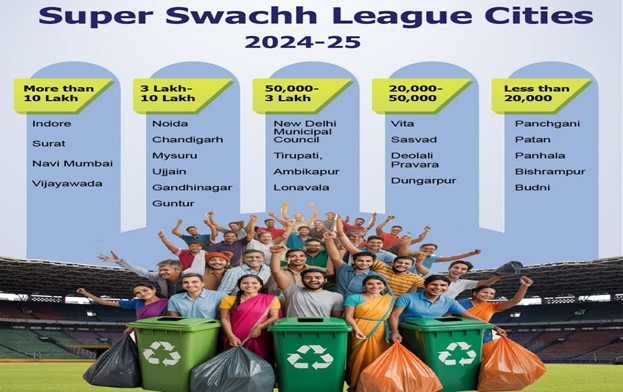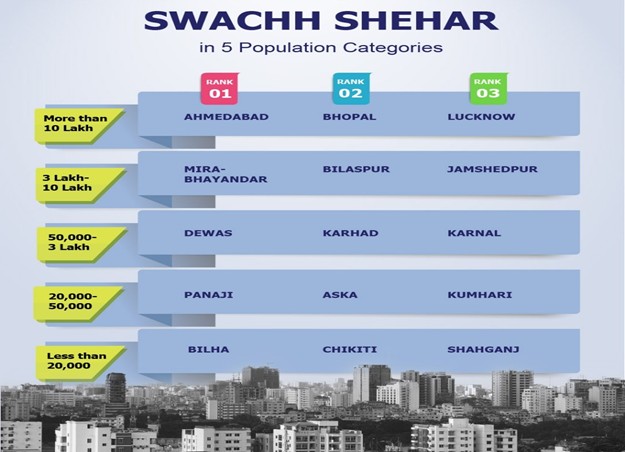Kanwar Yatra
Prelims - Current events of National & International importance | History of India & Indian National Movement.
Why in News?
In recent years, the Kanwar Yatra has attracted scholarly interest due to its increasing scale and cultural significance.
- Kanwar Yatra – It is an annual religious pilgrimage.
- It begins weeks before the new moon (Amavasya) during the month of Shravan (July-August).
- It is undertaken by millions of Lord Shiva's devotees, known as Kanwariyas.
- Devotees travel to the holy city of Haridwar to collect water from the Ganges River and then return to their native places across India.
- They travel from holy sites like Haridwar, Gaumukh, and Gangotri to Shiva temples, particularly the Shiva lingam.
- They return with holy Ganga water in Kanwars (decorated containers carried on a bamboo pole).
- This water is then offered to Shiva temples, including the 12 Jyotirlingas across India.
- This annual event involves walking long distances while carrying the sacred water in decorated containers called Kanwars.
- Similarities - Kanwar yatra in North India is celebrated as Kavadi festival in Tamil Nadu in which Lord Muruga is worshipped.
- Mythology - The ritual goes back to the ‘samudra manthan’, narrated in the Bhagavata Purana and in the Vishnu Purana, which explains the origin of ‘amrita’, or the nectar of immortality.
- Another origin story of the Kanwar yatra is linked with Lord Parashuram, a devotee of Shiva.
- The term “Bol-Bam” refers to pilgrimages and festivals in the countries of India and Nepal glorifying Lord Shiva who is also known as Bam.
Reference
The Indian Express| Why millions join the Kanwar Yatra?
Swachh Survekshan 2024-25 Awards
Prelims: Current events of national and international importance.
Why in News?
President conferred Swachh Survekshan 2024-25 Awards at Vigyan Bhagwan, New Delhi.
- Hosted by - The Ministry of Housing and Urban Affairs (MoHUA).
Annual cleanliness survey conducted by the Ministry of Housing & Urban Affairs (MoHUA) is now the largest urban sanitation survey in the world.
- Parameters - Waste segregation, processing, sanitation in public spaces, and citizen feedback.
Award Categories
- Premier Super Swachh League cities - Indore, Surat, Navi Mumbai with over 10 lakh population.
- Indore is the cleanest city in this category for the past 7 years.
- India’s New Clean Cities - Ahmedabad, Bhopal, and Lucknow, with a population of 10 lakh or above.
- One city, One Award - The top-performing cities from each State were recognized as Promising Swachh Shehars through the ‘One City, One Award’ principle.
- 34 cities across various States and Union Territories earned Promising Swachh Shehars, showcasing their notable progress in urban cleanliness and sanitation excellence.
- Cities awarded based on the classification of 5 population categories.


- Best Ganga Town - Prayagraj.
- Best Cantonment Board - Secunderabad Cantonment for its exemplary sanitation efforts.
- Best SaifaiMitra Surakshit Shehar - Visakhapatnam, Jabalpur, and Gorakhpur, were declared for their outstanding commitment to the safety and dignity of sanitation workers.
- State Govt. of UP, Prayagraj Mela Adhikari and Prayagraj Municipal Corporation as specially recognized for its exceptional urban waste management during the Mahakumbh.
- New initiatives
- Swachh City Partnership initiative - It emphasized the significance of peer learning for all 78 top performing cities will across all population categories & mentor 1 poor performing city each from the respective States.
- Following the mantra of “Each one clean one”, the winning cities will guide, handhold and lead the way for the others.
- Accelerated Dumpsite Remediation program – It is a 1-year special program to help fast-track legacy waste remediation and unlock massive urban space and also push the scientific waste processing capacity.
- Significance - Promoting the Reduce, Reuse, Recycle (3R) approach
- Waste to wealth memento embracing the principles of a circular economy.
- Empowering youth, generating green jobs, and creating entrepreneurial opportunities, engaging SHGs.
- School interventions, initiatives for source segregation startups, zero waste colonies are making the resolve for Swachh Bharat stronger.
Reference
PIB| Swachh Survekshan 2024-25 Awards
Hindustan Times| Indore moved to Super Swachh League
Platform fees now an “common industry practice,”
Prelims - Current events of National & International importance and General Science.
Why in News?
A Rs.2 platform fee on Swiggy in 2023 began as a trial but soon became a trend across all the e-commerce and quick commerce platform.
- E-commerce – It refers to buying and selling of goods and services online, focuses on large inventories and scheduled deliveries.
- It includes everything from purchasing clothes and electronics to booking vacations and paying bills. For example, platforms like Amazon, Flipkart, and Shopify etc.
- Quick commerce - Faster and more immediate version of e-commerce.
- It caters to the growing need for speed in online shopping, ensuring deliveries within minutes to a few hours, which prioritizes speed and proximity.
- It ensures that these urgent needs are met almost instantly. For example, platforms like Blinkit, Zepto, and Instamart etc.
- Platform fees – These are charges imposed by online marketplaces, service providers, or software platforms for using their infrastructure and services to conduct transactions or access functionalities.
- It is now being charged across all major food and grocery delivery platforms.
- Reasons cited by commerce platform – It helps the platforms running smoothly, invest in product improvements, and continue delivering a smooth and convenient experience for users.
- Hide trick used by commerce platform - Companies avoid raising base prices because shoppers often compare item prices across apps before buying.
- If the visible price looks high, people might choose a cheaper option elsewhere.
- So instead, platforms add fees at checkout, where customers are already more committed.
- Consumer’s concern - The fees are a growing concern from a consumer point of view.
- When a product is sold on platforms, makes harder for customer to get a good deal.
- If all companies follow the same pattern of hiking fees, it might seem like they're indirectly group up to inflate prices instead of competing.
- This raises concern around anti-competitive practices, entities and platforms acting as a cartel to increase prices for consumers.
- Transparency asymmetry– Customers have a right to know clear information about the fees they’re being asked to pay, reduces the exploitation.
Reference
The Hindu| Platform fees now an ‘Common Industry Standard’
Palm Oil Production in India
Prelims : Current Events of National and International Importance
Why in News?
Recently, India has emerged as Malaysia's largest importer of germinated oil palm seeds, with demand surging as the country accelerates efforts to boost domestic palm oil production and reduce import dependency.
- Palm oil is currently the world’s most consumed vegetable oil.
- Top consumers - India, China, and the European Union (EU).
- Recent development - India imported 3.03 million tonnes of palm oil from Malaysia in 2024, representing 17.9% of Malaysia's total palm oil exports and making it the top destination for Malaysian palm oil.
- India’s aim – To rapidly expand palm oil cultivation to 1 million hectares by 2025-26 and achieve nearly 2.8 million tonnes of crude palm oil production by 2029-30 under National Mission on Edible Oils-Palm Scheme.
|
Palm Tree
|
- Common names - Betel nut, areca.
- Family – Arecaceae
- Life span - 25 years to more than 30 years while facilitating harvesting operations.
- Constraints - Slower height growth, an erect, slender-stemmed, single-trunked palm that can grow up to 30 m tall but normally trees are in between 10 to 15 m in height.
- Growing condition – Tropical conditions similar to many Indian regions with sufficient rainfall.
|
- Current Malaysian commercial seeds are suitable for cultivation in India with proper farming practices and adequate irrigation.
- Malaysia is promoting sustainably certified palm oil under the Malaysian Sustainable Palm Oil (MSPO) standard and enhancing productivity through research and development
- MPOB has developed high-yield palm varieties through selective breeding capable of producing over 30 tonnes of fresh fruit bunches (FFB) per hectare annually.
- This is nearly double Malaysia’s national average yield of 15.47 to 16.73 tonnes per hectare recorded between 2020 and 2023.
- The improved varieties also have slower height growth, extending economic lifespan from 25 years to more than 30 years while facilitating harvest operations.
- Usages – Extensively used in the production of detergents, plastics, cosmetics, and biofuel.
|
National Mission on Edible Oils-Oil Palm scheme
|
- Aim - To enhance the edible oilseeds production and oils availability in the country by harnessing Oil Palm area expansion, increasing CPO production and to reduce import burden on edible oils.
- Focus - Increasing edible oil production from Oil Palm.
- Current land distribution - 3, 70,000 hectares under palm oil cultivation as of mid-2025.
- Focused areas - Northeastern States and island regions.
- Target - To increase area of oil palm to 10 lakh hectares from 3.5 lakh hectares during 2019-20 by 2025-26 (additional 6.50 lakh ha) of which it is targeted for
- General state - 3.22 lakh hectares
- North Eastern states - 3.28 lakh hectares with targeted FFBs production of 66.00 lakh tonnes.
|
Reference
The Hindu| India emerges as Malaysia's largest importer of germinating oil palm seeds

